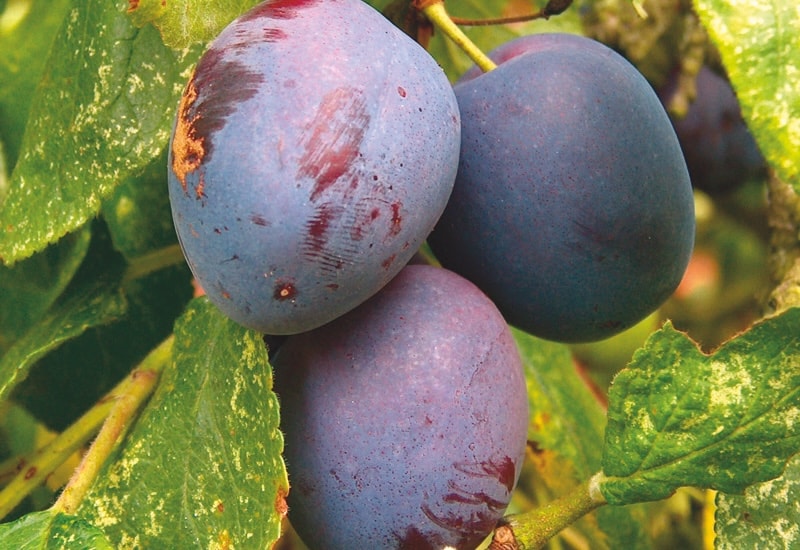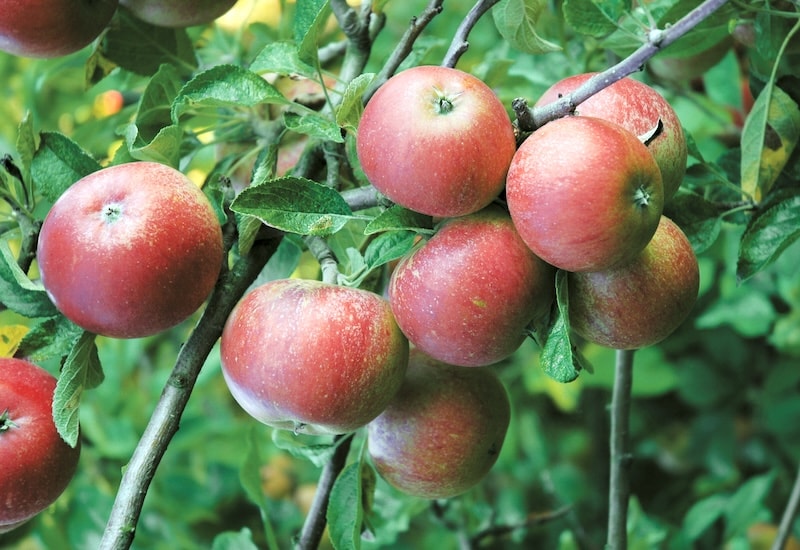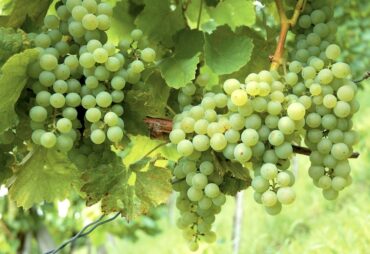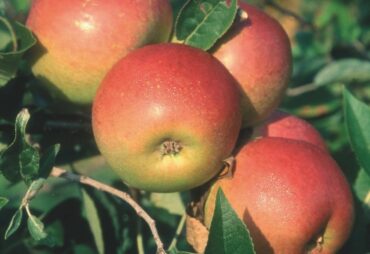Traditionally, nearly all trees were sold bare-rooted. It’s only our relatively new desire to plant all year round that has led to the surge of container-grown varieties. Bare-rooted trees are grown in the ground and dug up whilst dormant. Delivered between November and March, they arrive in specially designed boxes with no soil around the roots and no plastic container. Often more cost-effective than pot-grown alternatives, bare roots should be planted as soon as possible. Here are some tips on buying bare root fruit and nut trees.
In the meantime, browse our full range of fruit trees for inspiration or try a nut tree for an ornamental edible that’s a bit different.
How to choose the best rootstock for fruit and nut trees
Most fruit and nut trees are grafted onto a “rootstock” chosen for its size, vigour and disease resistance. Suttons rootstocks are all certified virus-free and have been chosen for their ability to produce healthy crops on manageable sized trees.
Most of our smaller nut trees like Almond ‘Ingrid’ are grafted onto St Julian ‘A’; a semi-vigorous rootstock that grows to a maximum height of 4.5-5m tall. This size can of course be further controlled through pruning. For bigger gardens, nut trees like Walnut Lara® are grafted onto Juglans regia rootstock and reach a mature height of about 12m.
Our fruit trees are grafted onto several different rootstocks so it’s important to choose the right variety for your garden. The following table should help:
| Fruit rootstock | Rootstock name | Rootstock type | Ultimate height |
|---|---|---|---|
| Apple | M27 (Similar to: P9) | Extreme dwarf | 1.2m |
| M9 (Similar to: Pajam2, Pajam 9, P2) | Dwarfing | 1.8-2.4m | |
| M26 | Dwarfing | 2.4-3m | |
| M6 | Semi Dwarfing | 3m | |
| M106 | Semi Dwarfing | 3-4m | |
| Cherry | Gisella 5 | Semi Dwarfing | 2.4-3m |
| Gisella 6 | Semi Vigorous | 3-4m | |
| Colt | Semi Vigorous | 5m | |
| Plum, Peach, Apricot and Nectarine | St. Julian | Semi Vigorous | 4.5m |
| VVA 1 | Semi Dwarfing | 2.5m | |
| Torrinel 24 | Semi Dwarfing | 2.4-3m | |
| Myrobalan | Semi Vigorous | 5m | |
| Ferlenain | Semi Dwarfing | 3m | |
| Mont Clare | Semi Dwarfing | 3m | |
| Pear | Quince A | Semi Vigorous | 3-4m |
| Quince C | Semi Dwarfing | 2.4-3m | |
| Quince Adams | Semi Dwarfing | 2.4-3m | |
| Citrus | PS | Dwarfing | 2.4-3m |
| Walnut | Juglans regia | Vigorous | Over 6m |
You’ll also need to consider pollination groups when choosing bare root trees. All fruit trees benefit from having another tree of the same pollination group close by, even those that are self-fertile. The pollination partners could be in a neighbour’s garden if you don’t have room for more than one.
Pollination groups are based on how early or how late the tree flowers, with 1 being very early and 7 being the latest. When selecting your trees, look for varieties that are within one group of each other. So, a group 3 tree should be grown close to a group 2,3 or 4 partner.
Which fruit trees can you buy bare root?

Image: Plum ‘Czar’ from Suttons
Bare root fruit trees are a great investment that give you many years of delicious crops. Here are some of the most popular bare root fruit tree options:
- Apple trees – try Apple ‘Queen Cox’ self fertile
- Pear trees – try Pear ‘Beurré Hardy’
- Apricot and peach trees try – Apricot ‘Flavorcot’® and Peach ‘Peregrine’
- Plum, damson and gage trees – try Plum ‘Victoria’ and Gage ‘Cambridge’
- Cherry trees – try Cherry ‘Stella’
- Quince ‘Vranja’
- Sharon fruit ‘Fuyu’
Which nut trees can you buy bare root?

Image: Walnut ‘Europa’ from Suttons
Nut trees make an excellent addition to any garden, and you can choose beautiful dwarf varieties if you don’t have much space. These nut trees are all available as bare roots:
- Walnut ‘Europa’
- Purple Filbert nut tree
- Almond ‘Robijn’
- Hazelnut ‘Red Cracker’
- Hazelnut Kentish Cob
- Sweet Chestnut (hedging)
Planting bare root fruit and nut trees: video guide
Bare root trees are not lifted from the ground until they become dormant. Milder weather means that, although we used to deliver trees in October, we now need to wait until November.
Planting is best done as soon as possible after delivery but, if this isn’t possible, the trees will be fine in a cool but frost-free place for a few days. Perhaps an unheated shed or garage. If you need to wait longer, ‘heel’ your trees in somewhere convenient until you have time to plant them properly. When you do come to plant, soak the roots in a bucket of water for about 2 hours first.
The planting hole needs to be wide enough to allow the roots to spread out and deep enough for the old soil mark to be at ground level or just slightly below. Make sure that the union on grafted trees remains about 15cm (6″) above the ground. If you’re adding a stake, do it before you refill the hole to avoid damaging the roots. Then refill the hole and gently tread down the surface before watering well.
Problems with fungal infections
If you’ve lost a fruit tree to a fungal infection in your garden, it’s not advisable to grow another in the same area soon after. Fungus lives in the soil and stretches for a long way. Although it usually affects older or sick wood, it would be a big risk to plant a young fruit tree like a plum or gage again straight away. Our horticultural team recommends waiting several years before planting another fruit tree in the same spot.
We hope this has given you plenty of food for thought and you’ll give bare root fruit and nut trees a try. Visit our article on how to grow nut trees for more timely tips. And if you’re interested in how to grow fruit trees, our expert guide provides a wealth of helpful advice.
Lead image: Apple tree ‘Queen Cox’ from Suttons
Last Updated on February 9, 2024 by Suttons Horticultural Team






Hi Helen, thank you for your comment. It is not advisable to plant new trees if the old trees have been killed off by a fungus. Fungus lives in the soil and stretches for a long way. Although usually the manifest on older or sick wood, it would be a big risk planting young plum or gage trees so soon. I would wait a number of years before planting again. We hope this is helpful to you.
We have had several plum and gage trees suffer from a cushion fungus – Phellinus pornaceus. We have felled the affected trees. The fungus appeared on old Cambridgeshire gages and crossed our 70 metre garden to infect much younger trees on the other side.
Would it be alright to replant plum trees in our garden which is large – 70 metres wide and 200 metres long.